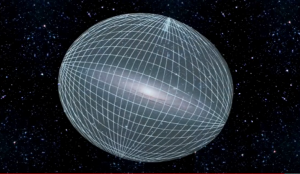Millhauser’s “Dome” is told by an anonymous narrator who is reflecting on the biggest advancement done within civilization (in this story). The point of view in which the story takes place is very interesting. The only thing we know about the narrator is that they have lived and experienced the evolution of the Dome. The narrator refers to themselves as ‘we,’ only a few times, as if speaking for humanity. Something about the way the narrator speaks makes it feel as if they are disconnected, and artificial, much like the Dome has made everything in it seem small and unrealistic.
 This story feels almost like a documentary piece, with the way that the Dome and its beginnings are described. The Dome itself starts out on a small scale and is incredibly flawed, much like most things in the beginning stages. The fact that the small domes start to escalate and become a more common commodity, only to later become one giant entity, shows the lengths to which humanity wishes to concur any inconvenience. Sure, there are upsides to the dome, but everything about life has become artificial. “The world, perceived as interior, shimmers with artifice” (119). The idea of going outside feels more like stepping into a larger room than in nature; there is a disconnect with things that felt natural and real before the dome. The artificialness is further explored by the narrator towards the end of the story, as thoughts of an even bigger dome are discussed; there will always be a bigger step, a new way to improve civilization. It will never be perfect enough. “Meanwhile we walk beneath the Celestilux sky, dreaming of new heavens, of impossible architectures. For a change is in the air. You can feel it coming” (121). Who is to say that solar systems and galaxies cannot be conquered, cannot be made perfect by humanity?
This story feels almost like a documentary piece, with the way that the Dome and its beginnings are described. The Dome itself starts out on a small scale and is incredibly flawed, much like most things in the beginning stages. The fact that the small domes start to escalate and become a more common commodity, only to later become one giant entity, shows the lengths to which humanity wishes to concur any inconvenience. Sure, there are upsides to the dome, but everything about life has become artificial. “The world, perceived as interior, shimmers with artifice” (119). The idea of going outside feels more like stepping into a larger room than in nature; there is a disconnect with things that felt natural and real before the dome. The artificialness is further explored by the narrator towards the end of the story, as thoughts of an even bigger dome are discussed; there will always be a bigger step, a new way to improve civilization. It will never be perfect enough. “Meanwhile we walk beneath the Celestilux sky, dreaming of new heavens, of impossible architectures. For a change is in the air. You can feel it coming” (121). Who is to say that solar systems and galaxies cannot be conquered, cannot be made perfect by humanity?